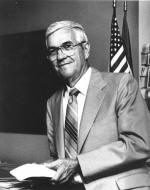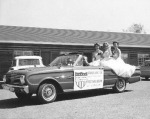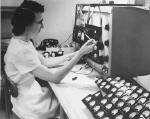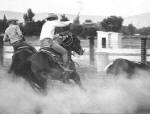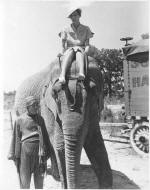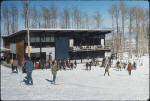
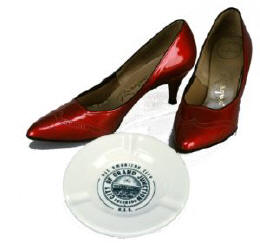
The All America City recognition inspired widespread use of its logo. Even ash trays were adorned with the city�s new honor. The metallic red shoes with spike heels and pointed toes were dress-up shoes for teacher Gladys Conway. A hat, gloves and purse also were included in a woman�s ensemble.
The 1960s
The 1960s saw
significant new developments. The Interstate Highway system reached here,
and put Grand Junction on that important national transportation grid. The
innovative downtown shopping park drew national attention. The city�s
population in 1960 had reached 18,694, a 28.9 percent increase over 1950.
